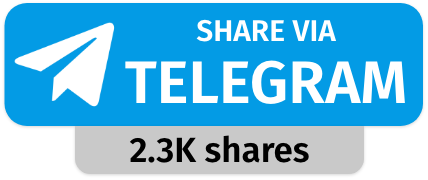Today’s Current Affairs: 20th August 2025 for UPSC IAS exams, State PSC exams, SSC CGL, State SSC, RRB, Railways, Banking Exam & IBPS, etc
Table of Contents
Udyam Sakhi Portal
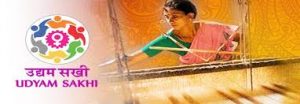
The Udyam Sakhi Portal, launched by the Ministry of Micro, Small and Medium Enterprises (MSME), is helping women entrepreneurs across the country start, build, and expand their businesses, said the Minister of State in a written reply in the Rajya Sabha recently.
- Udyam Sakhi portal was launched by the Ministry of MSME in March 2018 to provide information regarding financial schemes, policies, and programmes of the Ministry of MSME to existing/prospective women entrepreneurs in the MSME sector.
- The portal is a network for nurturing entrepreneurship and creating business models for low-cost products and services in order to empower women and make them self-reliant and self-sufficient.
- The portal helps women to start, build, and grow their businesses.
- The portal accords the following services through its programmatic functions:
- Entrepreneurship learning tools
- Incubation facility
- Training program for fund raising
- Providing mentors
- One-on-one investor meet
- Provide facilities for market survey
- Learning and development; be it by means of education, information, or technical assistance and training.
Sliteye Shark:
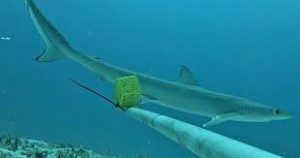
For the first time, scientists have recorded the sliteye shark in the Great Chagos Bank in the Indian Ocean, the world’s largest coral atoll.
- Sliteye Shark is a small-bodied shark species found in inshore waters throughout the Indo-West Pacific.
- It is a species of requiem shark, in the family Carcharhinidae, and the only member of its genus, Loxodon.
- Scientific Name: Loxodon macrorhinus
- Named for its distinctive, slit-like eyes—thought to enhance vision in low-light conditions—the sliteye shark is well adapted to deeper, dimly lit environments as well as clear and shallow waters.
- Widespread in tropical waters of the Indian and western Pacific Oceans between 34°N and 30°S off the coasts of Australia, China, Djibouti, Egypt, Eritrea, India, Indonesia, Japan, Kenya, Madagascar, Mozambique, Myanmar, Oman, Pakistan, Saudi Arabia, Somalia, South Africa, Sri Lanka, Sudan, Taiwan, Tanzania, and Yemen.
- It is a small shark with a very slender body, a long narrow face, large eyes, and short furrows at the corners of the mouth.
- It can reach a length of about 95 cm.
- The teeth are small, with a protruding tip and smooth edges.
- The ridge between the dorsal fins is absent or rudimentary.
- The coloration of the Sliteye shark is gray, the belly is white, and the edges of the fins are pale (transparent when alive).
- The caudal and first dorsal fins have dark edges.
- Conservation Status: IUCN Red List: Near Threatened.
Sahariya Tribe:
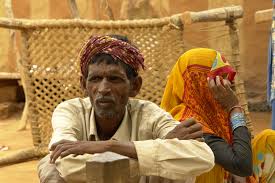
A remarkable genetic study conducted by researchers revealed a possible genetic link associated with the unusually high rate of tuberculosis (TB) in the Sahariya tribe of central India.
- It is one of the Particularly Vulnerable Tribal Groups (PVTG) and is among the most disadvantaged and vulnerable population groups in the country.
- The six-lakh population (Census 2011) is spread across Madhya Pradesh, Rajasthan, and Uttar Pradesh and sprinkled in a few other states.
- The Sahariya community is also called by the names Seher, Sair, Savar, Saonar, Sahra,
- Residing in communities with non-Sahariya members, the Sahariyas mostly live in a separate area in the village, which is called ‘Seharana’. It is generally a cluster of houses.
- The houses are made of some stone boulders, and the roofing is also made of stone slabs – locally called Patore. In some villages, mud structures are also constructed.
- In villages, ties to the caste system are very strong, and people belonging to the same caste live in close proximity.
- They live in small joint families.
- While the Sahariyas have lost their original language, they speak the local dialects of the regions they inhabit.
- The Sahariya practice their traditional ethnic religions.
- However, they are also aware of Hindu values and use them in defining their own identity.
- They are known for their dance, the Saharia Swang, which is performed during the month of Holi.
- The dance is performed to the beats of the dhol, nagari, and matki.
- It features a male dressed in female attire who dances around the male performers.
- Predominantly forest dwellers, they live in remote locations and make their living from forest produce, additionally cultivating small plots of land and work as landless labourers.
- They are particularly skilled in making catechu from khair trees.
- To supplement their meagre income, seasonal migration is very common in the tribe.
Rubella:
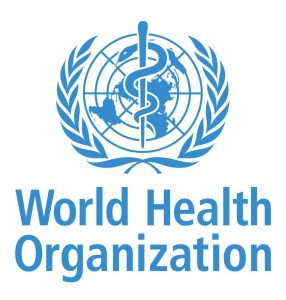
The World Health Organization recently announced Nepal has eliminated rubella as a public health problem.
- Rubella is a highly contagious viral infection best known by its distinctive red rash.
- It’s also called German measles or three-day measles.
- Rubella isn’t the same as measles, but the two illnesses share some signs and symptoms, such as the red rash.
- Rubella is caused by a different virus than measles, and rubella isn’t as infectious or as severe as measles.
- Rubella is caused by the Rubella virus, an enveloped, single-stranded RNA virus, different from the measles virus.
- The Rubella virus spreads from person to person when you cough, sneeze, or touch surfaces with the virus on them.
- It can also spread from a pregnant woman to the fetus.
- You can be contagious with rubella without symptoms.
- This infection may cause mild or no symptoms in most people.
- The main symptom of rubella is a spotty rash that starts on the face or behind the ears and spreads to the neck and body.
- The rash takes 2 to 3 weeks to appear after getting rubella.
- Rubella can cause serious problems for unborn babies whose mothers become infected during pregnancy.
- When a woman is infected with the rubella virus early in pregnancy, she has a 90% chance of passing the virus on to her fetus.
- This can cause the death of the fetus, or it may cause Congenital Rubella Syndrome (CRS). Infants with CRS may excrete the virus for a year or more.
- Children with CRS can suffer hearing impairments, eye and heart defects, and other lifelong disabilities, including autism, diabetes mellitus, and thyroid dysfunction.
- The measles-mumps-rubella (MMR) vaccine is safe and highly effective in preventing rubella.
- The vaccine provides lifelong protection against rubella.
- There are currently no medications available to treat rubella.
- Mild symptoms can be managed with bed rest and medicines for fever.
Minimum Public Shareholding : SEBI

SEBI recently proposed to increase the flexibility of Minimum Public Shareholding (MPS) and Minimum Public Offer (MPO) for companies aspiring to get listed, aimed at “simplifying fund-raising by issuers in India.
- The Minimum Public Shareholding (MPS) rule is a regulatory requirement laid out by SEBI under the Securities Contracts (Regulation) Rules, 1957, and reinforced by the Listing Obligations and Disclosure Requirements (LODR) Regulations.
- It is applicable to all listed companies in India.
- As per these rules, all listed companies must ensure that at least 25% of their total issued and paid-up equity share capital is held by public shareholders—i.e., non-promoters and non-promoter group entities.
- Where promoters are holding more than 75%, they have to mandatorily divest additional shares to the public to comply with the MPS rule.
- Such stake reduction could be done either by placing shares with institutions or by issuing rights shares to dilute their holdings.
- The objective is to:
- Enhance liquidity in the market
- Promote fair price discovery
- Ensure broader participation and corporate governance
- Newly listed companies are expected to meet this requirement within three years from the date of listing.
- For issuers with a post-issue market cap of over ₹1 trillion, the deadline for 25% MPS is five years.
- If the public shareholding falls below 25% at any time, such company shall bring the public shareholding to 25% within a maximum period of 12 months from the date of such fall.
Palmyra Palm Tree:
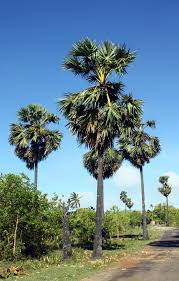
Palmyra palm trees in Odisha are providing dual benefits by reducing lightning-related deaths and serving as a food source for elephants during lean seasons.
- Palmyra Palm Tree is commonly named as sugar palm, or toddy palm or fan palm.
- It is a native of tropical Africa but cultivated and naturalized throughout India.
- In India, it is planted as a windbreak on the plains.
- Required Climatic Conditions
- It exhibits adaptability to a wide range of soil types, including arid and wastelands. They thrive particularly well in sandy soil, red soil, black soil, and river alluvium.
- These palms are also suited for semi-arid regions with an annual rainfall of less than 750 mm.
- They can grow at altitudes from sea level up to 800 meters.
- Palmyra is mainly propagated through seeds and there is no vegetative method available for its propagation
- It is used as a natural shelter by birds, bats and wild animals.
- The chief product of the palmyra is the sweet sap (toddy) obtained by tapping the tip of the inflorescence.
- The toddy ferments naturally within a few hours after sunrise and is locally popular as a beverage.
- Palmyra palm jaggery (gur) is much more nutritious than crude cane sugar.
- Traditionally, the Indian ‘Nadar’ community are the people who make their living from this tree using its wood, fruits, sap, stems, petioles and leaves to process a variety of food products, beverages, furniture, building materials, and handicrafts.
Periodic Labour Force Survey: June 2025
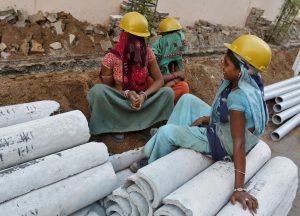
According to the Monthly Bulletin of the Periodic Labour Force Survey (PLFS), India’s unemployment rate fell to 5.2% in July 2025 from 5.6% in June 2025.
- Periodic Labour Force Survey gives estimates of key employment and unemployment Indicators like the Labour Force Participation Rate (LFPR), Worker Population Ratio (WPR), Unemployment Rate (UR), etc.
- The sample design of the Periodic Labour Survey (PLFS) has been revamped from January 2025.
- As part of revamping of the sample design monthly rotational panel scheme has been implemented for both rural and urban areas wherein each selected household is visited four times in four consecutive months
- The redesigned PLFS aims to achieve the following objectives:
- To generate key employment and unemployment indicators every month for both rural and urban areas at the all-India level under the Current Weekly Status (CWS).
- To extend the Quarterly PLFS results to rural areas, thereby producing quarterly estimates of labour market indicators for both rural and urban India under the CWS framework.
- To provide annual estimates of key employment and unemployment indicators in both usual status (ps+ss) and Current Weekly Status (CWS) for rural as well as urban areas.
- This survey is conducted by the National Sample Survey (NSO), working under the Ministry of Statistics and Programme Implementation (MoSPI).
e-Jagriti Platform:

Over two lakh users, including NRIs, have registered on the e-Jagriti platform since its launch.
- e-Jagriti is a flagship initiative by the Department of Consumer Affairs, Government of India.
- It is aimed at strengthening the consumer dispute redressal system across the country.
- The project focuses on the computerization and networking of all Consumer Commissions at the national, state, and district levels to ensure transparency, efficiency, and speedy resolution of consumer disputes.
- e-Jagriti enables consumers to file complaints, track case statuses, and access judgments online.
- The platform plays a vital role in digitizing consumer commissions and empowering citizens by providing easy access to legal remedies.
- It provides simple, fast and a more cost-effective consumer disputes redressal software solution at all levels.
- It is envisaged to integrate consumer grievance platforms, namely, Online Case Monitoring System (OCMS), E-Daakhil, NCDRC Case Monitoring System, CONFONET website, mediation application, in a single platform.
- It has case filing, online fee payment, case monitoring modules for seamless disposal of cases by all the Commissions, has Smart search facility on archived consumer complaints / cases / judgements using AI technology for metadata and keyword creation, and Voice-to-text conversion of judgements, case history and other details using AI / ML technology.
- With its user-friendly interface and real-time updates, e-Jagriti ensures accountability, reduces paperwork, and fosters a more transparent and accessible justice system for consumers nationwide.
Removable Solar Panel System:
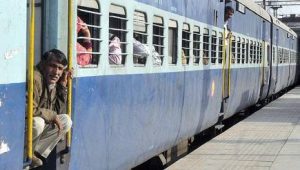
Indian Railways has commissioned the country’s first removable solar panel system installed between railway tracks.
- It is a 70-metre-long solar installation with 28 removable panels generating 15 KWp power.
- Placed between railway tracks, ensuring efficient use of space.
- Launched in: August 2025 at Banaras Locomotive Works, Varanasi by the Ministry of Railways.
- Objective:Promote green and sustainable rail transport.
- Generate clean energy using underutilised track space.
- Reduce dependence on fossil fuels and cut carbon footprint.
- Features:
- Removable design → panels can be lifted for maintenance or emergencies.
- Compact installation → no need for large land acquisition.
- 15 KWp capacity → supports auxiliary power needs at railway units.
- Pilot project → model for replication across India.
Indian Ports Bill, 2025 : Passed

The Rajya Sabha passed the Indian Ports Bill, 2025, replacing the colonial-era Indian Ports Act, 1908.
- It is anew legislation to replace the outdated Indian Ports Act, 1908.
- Provides a modern, transparent, and investor-friendly framework for India’s port sector.
- Objectives of the Bill:
- Replace archaic colonial laws with a contemporary governance structure.
- Strengthen cooperative federalism through Centre–State partnership.
- Ensure environmental compliance and green port development.
- Encourage investment, PPPs, and FDI in port infrastructure.
Indian astronaut to land on moon in 2040:

Union Minister Jitendra Singh announced in the Lok Sabha that an Indian astronaut will land on the Moon by 2040, while also outlining India’s broader space roadmap.
- India’s proposed crewed lunar mission by 2040 is part of a long-term vision to position India as a global space power and align the space programme with the goal of Viksit Bharat by 2047.
- Objective
- To demonstrate human space exploration capability beyond Earth orbit.
- To build indigenous capacity for lunar habitation, exploration, and resource utilisation.
- To integrate India’s space programme with its economic, scientific, and security ambitions.
- Key Features:
- Human landing: An Indian astronaut will step on the Moon by 2040.
- Indigenous development: Reliance on Indian-built launch vehicles, life support systems, and surface technologies.
- Global collaboration: Scope for joint missions with advanced space agencies for technology sharing.
UNHCR suspended the repatriation of Sri Lankan Tamil refugees from India:
The UNHCR suspended the repatriation of Sri Lankan Tamil refugees from India after some returnees were arrested in Sri Lanka for alleged violations of immigration laws.UNHCR is a UN agency mandated to protect and support refugees, stateless persons, and internally displaced people worldwide.
It promotes durable solutions like voluntary repatriation, local integration, or resettlement in third countries.It was Created in 1950 by the UN General Assembly in the aftermath of World War II. Began operations in 1951 with an initial three-year mandate, later made permanent.
India passes Mines & Minerals Amendment Bill 2025:
Parliament passed the Mines and Minerals (Development and Regulation) Amendment Bill, 2025, marking a key reform to the MMDR Act, 1957. This Bill is set to transform India’s mineral sector by expanding access to critical minerals, modernising exploration practices, and improving the efficiency of resource management.The National Mineral Exploration Trust is renamed the National Mineral Exploration and Development Trust, now empowered to support mineral projects not only in India—including offshore—but also overseas. The Trust’s funding capability has been enhanced by increasing the royalty contribution from 2% to 3%.
Union Cabinet clears Online Gaming Bill:
The Union Cabinet chaired by Prime Minister Narendra Modi has approved the Online Gaming Bill, 2025. The proposed legislation seeks to promote e-sports and social online gaming while making online betting and money gaming punishable offences.The Bill is expected to be introduced in the Lok Sabha shortly, marking a decisive step against online fraud, financial crimes, and misleading celebrity endorsements of betting platforms
Lok Sabha passes IIM Amendment Bill 2025:
ssed the Indian Institutes of Management (Amendment) Bill, 2025, paving the way for the establishment of a new Indian Institute of Management (IIM) in Guwahati, Assam. The move represents a major stride in expanding premier management education to the North-Eastern region of India, fulfilling a long-standing regional demand.The Bill amends the Indian Institutes of Management Act, 2017, to officially incorporate IIM Guwahati into the list of national management institutes. The institution will receive a central financial grant of ₹550 crore to support its development, infrastructure, and operational setup.
Since 2016, Stand-Up India Scheme has sanctioned ₹62,791 crore to 2.75 lakh SC/ST:
The Stand-Up India Scheme, launched in April 2016 to promote entrepreneurship among Scheduled Castes (SC), Scheduled Tribes (ST), and women, has achieved a significant milestone. As of August 2025, banks have sanctioned ₹62,791 crore in loans to 2,75,291 beneficiaries, according to information presented in Parliament by Minister of State for Finance Pankaj Chaudhary.The scheme was introduced on 5 April 2016 with the objective of encouraging greenfield enterprises by providing financial support to underrepresented sections.
Dubai introduces unified “One Freezone Passport” license system:
Dubai has launched the “One Freezone Passport”, a unified licensing system enabling companies to operate across all of the emirate’s free zones under a single license. The reform, unveiled by the Dubai Free Zones Council, is expected to significantly lower costs, reduce bureaucracy, and accelerate business expansion.


